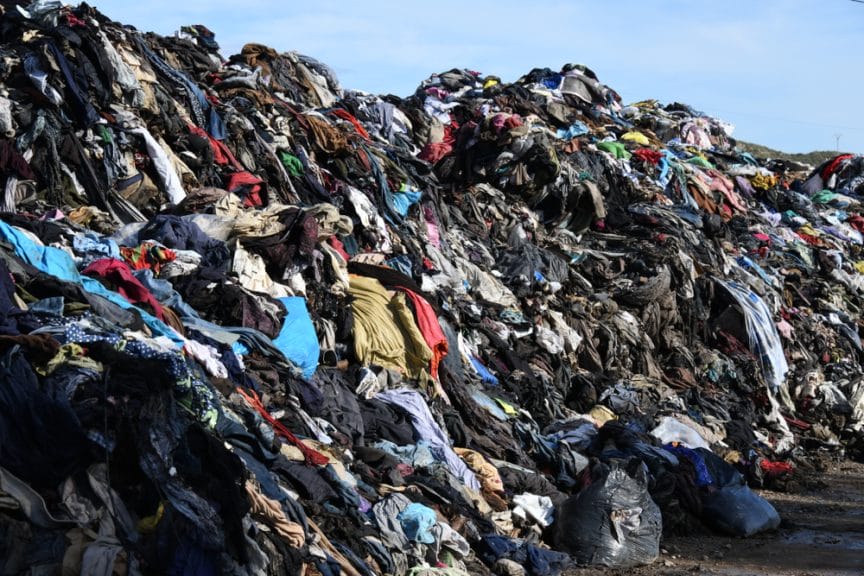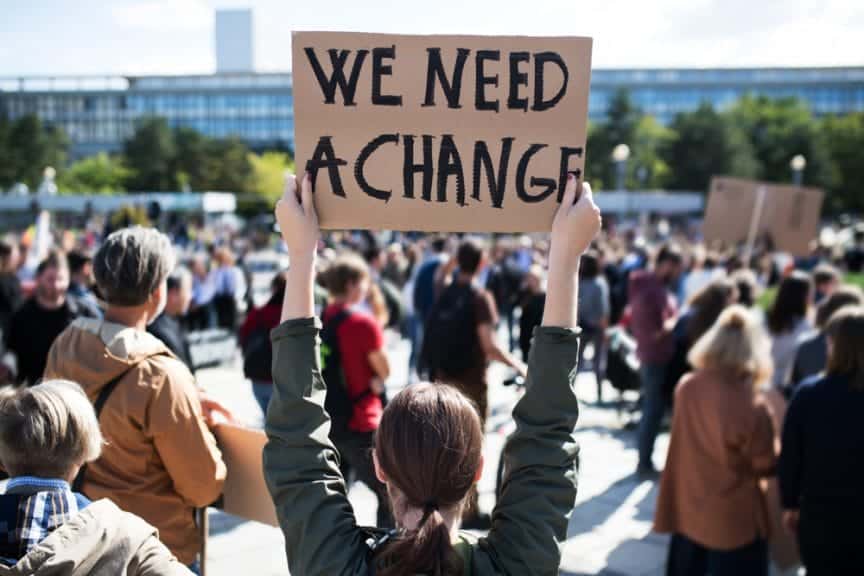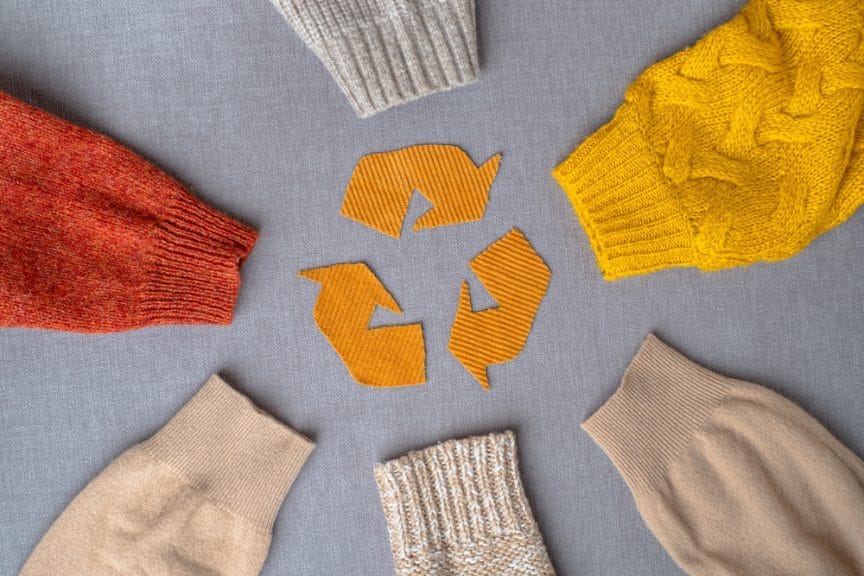Our climate is dying ever more each day, and the fashion industry is partly responsible for the effects.
Fast fashion has always dominated the fashion industry. Most well-known brands like Zara, H&M, UNIQLO, Urban Outfitters, Stradivarius, and Primark are part of the fast fashion industry.
In recent years, Shein has made quite a splash in the fashion industry as it is now among the highest-grossing fashion online retailers. According to marketing expert data, Statista, Shein has an estimated annual revenue of $22.7 billion.
Shein’s annual revenue increased significantly between 2019 and 2021, three years in which most of us resonate with COVID-19. The lockdown somewhat had an impact on the fashion industry. Due to stores being closed, people turned to online shopping, which also explains the rise of Shein.
According to a survey conducted by Retail Gazette, 21% of the British public started buying more fast fashion items since the start of the pandemic, rising to 42% among 16 to 24-year-old individuals.
However, Shein’s success in retail has cost the environment. In 2021, a wave of scientific articles alerted the public of climate change and demanded people to take action to preserve our planet. In this article, I am looking to unfold how the fashion industry has impacted our environment and what is being done to preserve it and ensure a more sustainable future in the fashion industry.
What is Fast and Slow Fashion?
Fast fashion is a term used to describe the manufacturing of clothes that use cheap materials and depend on labor methods. These practices impact our environment and social impact. This is because of the ethical issues behind the well-being and conditions of the workers.
Slow fashion, on the other hand (also referred to as sustainable fashion), prioritizes the well-being of our environment, people, and animals. It focuses on manufacturing clothes by considering the lifecycle and disposal of the clothes, as well as fair pay and conditions for the workers. Some brands that are known for being sustainable are Levi’s, Eileen Fisher, Adidas, and Outerknown.
How does it impact our environment?

According to the United Nations, the fashion industry is responsible for 10% of global carbon emissions. They further revealed that ‘part of these emissions come from pumping water to irrigate crops like cotton, oil-based pesticides, machinery for harvesting, and emissions from transport.’
The fashion industry is also the second largest consumer of the world’s water supply. According to Business Insider, producing a pair of jeans takes nearly 2,000 gallons of water. ‘This is more than enough for one person to drink eight cups of water daily for ten years.’ The World Resources Institute (WRI) reported that producing one cotton shirt takes 2,700 liters of water. This is equivalent to what one person would drink for three and a half years.
As well as being the second largest consumer of the world’s water supply, the fashion industry is responsible for polluting the oceans with microplastics. The fashion industry is estimated to emit 20% of industrial water pollution worldwide.
According to the United Nations Environment Programme (UNEP), dying clothes is the second biggest water polluter. This is because the leftover water used in the dying textile process is usually dumped in ditches, streams, and rivers. The Business Insider said that the dying process of the clothes uses ‘enough water to fill two million Olympic-size swimming pools each year.’
Washing clothes is another factor in polluting water. It is estimated that 500,000 tons of microfibers are released into the ocean each year due to washing clothes. That is equivalent to 50 billion plastic bottles.
In fast fashion, many clothes are manufactured for each line, but some don’t even get to see the light of day. According to the United Nations, the fashion industry is valued at $2.4 trillion. However, alarms were raised by the Ellen MacArthur Foundation, which revealed that the fashion industry loses $500 billion each year. This is because of the lack of action to recycle the clothes that don’t sell and that get thrown into landfills.
Every year, 85% of textiles go into landfills, which is enough to fill the Sydney harbor. The Ellen MacArthur Foundation also pointed out that due to these high losses, the industry could be responsible for a quarter of the world’s carbon budget by 2050.
What is the plan?
“In the face of growing environmental threats, there is an urgent need to radically change our consumption and production systems. In this regard, a more sustainable fashion industry has a critical role to play,”
Naoko Ishii, CEO and Chairperson of the Global Environment Facility.
A plan to save our climate has been in motion for a while now. The Sustainable Development Goals (SDG) was first introduced by the United Nations in 2015 with the determination to fulfill 17 goals by 2030.
I recommend reading this document by the United Nations Economic Commission for Europe (UNECE). It details how each SDG links with one another and what they strive to accomplish.
According to the United Nations Sustainable Development website, in December 2018, 43 major brands and suppliers signed the Fashion Industry Charter for Climate Action with the support of the United Nations. The goal is to achieve net zero greenhouse gas emissions by 2050.
What are brands doing to be sustainable?
Many fast fashion brands have installed sustainable fashion plans. For example, Adidas is reducing inventory, and Ralph Lauren plans to use 100% sustainable fashion-sourced materials by 2025.
Superdry is another example of a fast fashion brand that has committed to becoming a sustainable brand. Some of their goals include converting to 65% organic materials by 2025 and 100% by 2050. As well as reduce their water usage by 20% by 2025 and 40% by 2050. They also plan to convert to recyclable, reusable, and compostable alternatives of packages by 2025. However, they have already achieved some key achievements, which you can see on their website.
What can we do to be sustainable?

The UN Sustainable Development Goals program listed seven zero-waste actions we can take to preserve our environment.
- Reduce consumption – before buying clothes, consider how essential it is and how many times you plan on wearing them.
- Thrift shop or buy clothes second-hand.
- Reduce your water waste by washing your clothes less frequently.
- Instead of throwing your clothes away, donate them to a charity.
- Linking with number four, some shops offer recycling programs.
- You can use the materials of clothes you don’t wear anymore to make something new. This can either be turning something into a pillowcase or changing the style (from a long to short skirt)
- Lastly, share your #ActNow stories on social media. This way the world can see how you are being sustainable and helping the planet.
Similar Articles:














